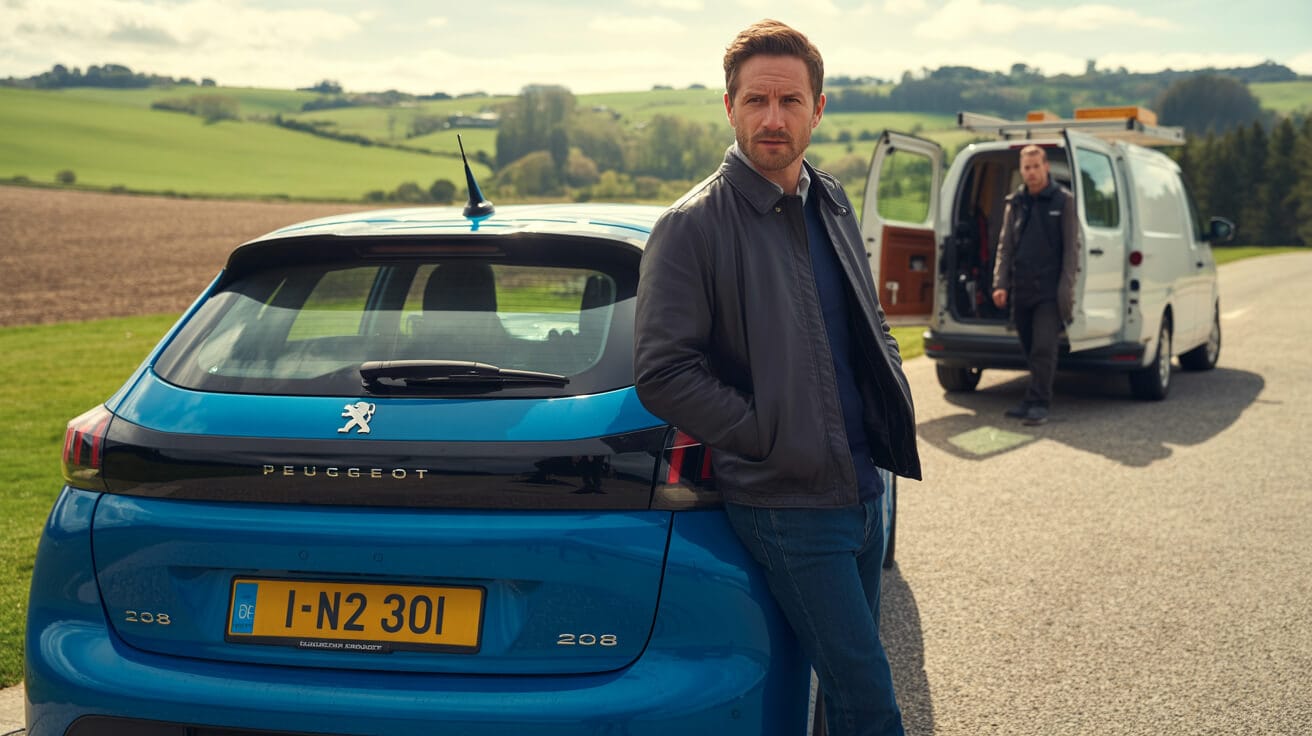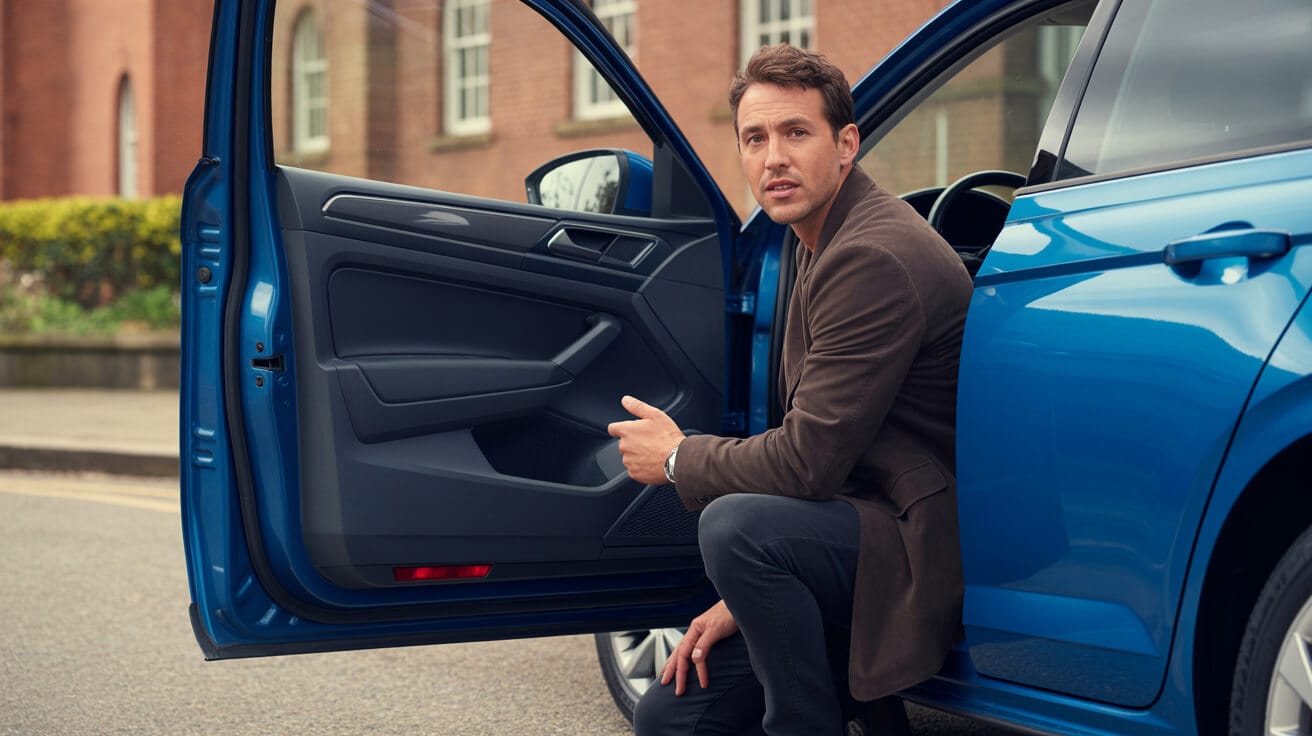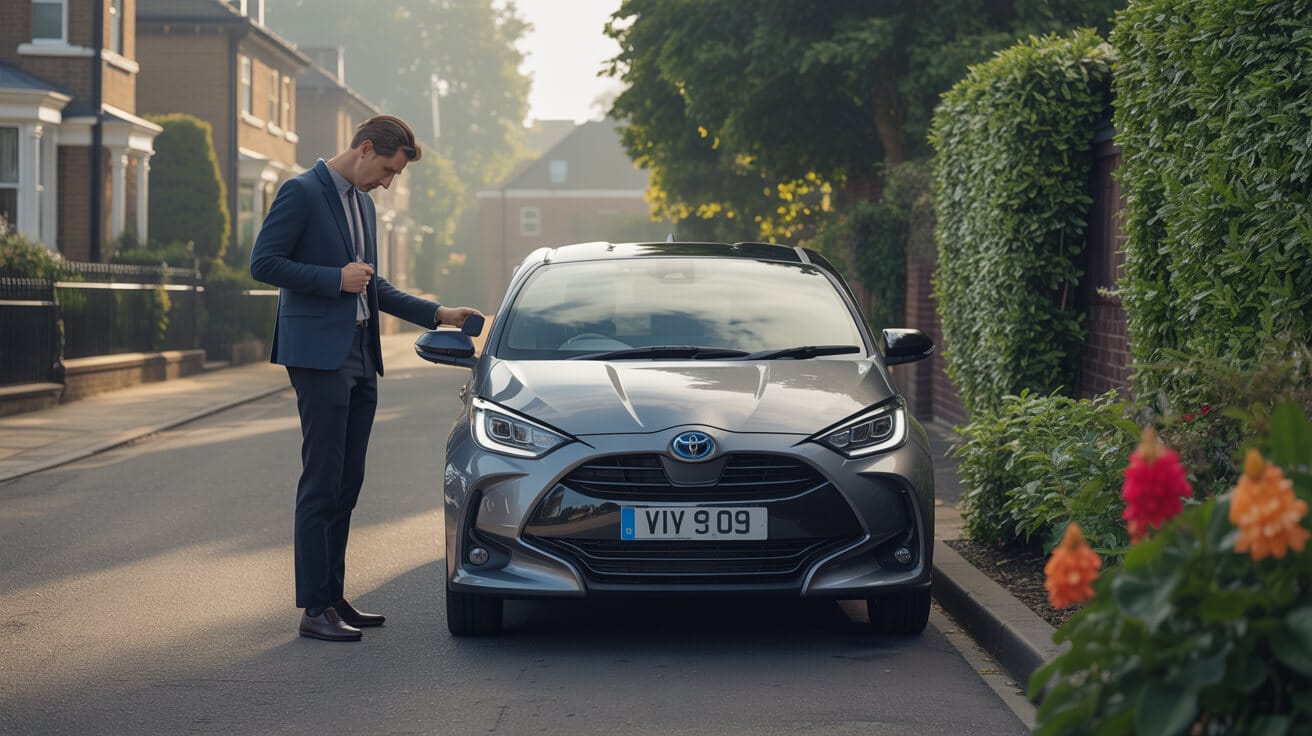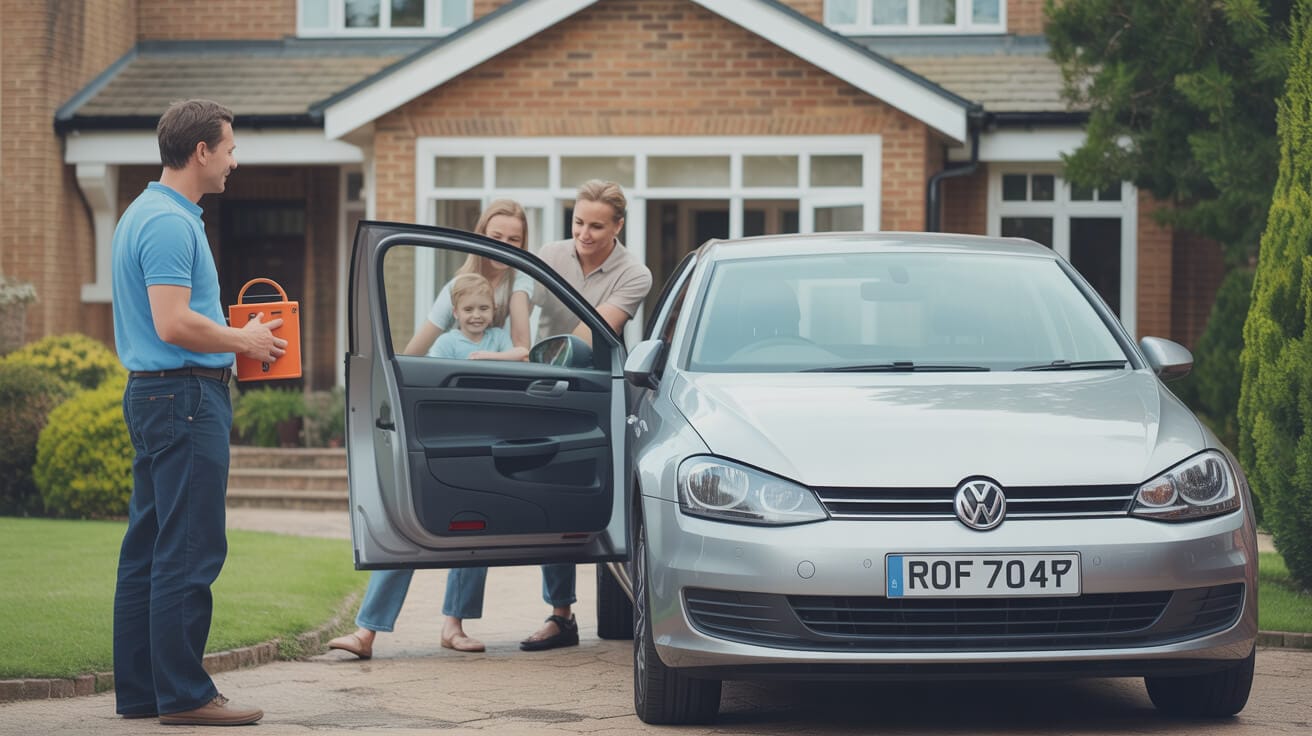Where Does EEPROM Fit in Modern Car Security?
The EEPROM (Electrically Erasable Programmable Read-Only Memory) is the chip responsible for storing all key and immobiliser data in your car. If your key opens the door and starts the engine, it’s because the EEPROM recognises its unique code.
Most modern UK vehicles—from Fords and VWs to BMWs and Toyotas—depend on an EEPROM to maintain each key’s digital “identity,” even when batteries fail or modules are replaced. Locksmiths and technicians rely on this chip to add, erase, or reprogram keys legitimately, ensuring both your security and privacy. Owner ID checks, audit logs, and non-destructive methods are all standard in reputable UK service.
What Sets EEPROMs Apart from Other Memory?
Unlike temporary or battery-dependent memory, EEPROMs retain their data even if your battery is flat or the car’s electronics are reset. That means your car never “forgets” which keys are authorised.
This permanence is what makes key recovery possible after major electrical work or battery issues, and it keeps your car’s access history consistent and secure.
How Does Your Car’s EEPROM Actually Work?

Every time you unlock, start, or even approach your car with a smart fob, the immobiliser checks the key’s code against the list stored on the EEPROM. If there’s a match, you’re good to go—otherwise, you’re locked out.
Programming or diagnostic access follows a strict routine: approved diagnostic tools connect through the OBD-II port, log the session, and require proper owner consent. EEPROMs can also be accessed on the bench if electronic faults prevent on-board programming.
How Do Immobilisers and EEPROMs Work Together?
Your key’s chip and the car’s immobiliser exchange encrypted codes, referencing the EEPROM every time. If the match fails, the immobiliser blocks the engine and may trigger alarms.
This handshake system is why losing all keys or having a corrupted EEPROM can render your car completely inoperable—only safe, professional intervention resolves it.
Why Can’t You Simply Clone or Replace a Car Key?

No two modern car keys are truly identical; each digital code is unique and must match a slot in your car’s EEPROM. Cutting a blade that fits the lock is just the first step—the car also needs to “learn” the new key’s code before it will enable the ignition or unlock doors.
Locksmiths must prove ownership and document every key addition or removal. UK industry standards require secure logs, audit trails, and privacy-compliant paperwork for key services involving the EEPROM.
What Happens If All Keys Are Lost?
Losing every programmed key resets the process. The EEPROM is cleared of all previous entries and programmed to accept only the new keys you want. This is an essential security step—protecting you from risks if lost or stolen keys reappear.
Proper handling means only the authorised owner regains access, with all actions recorded for your records and warranty.
What Makes a Professional EEPROM Service Legitimate?

Professional EEPROM services start with strict identity and ownership verification. Only after confirming your permission does a technician proceed, using encrypted records to capture every step—what was changed, by whom, and with which tool.
UK regulations and GDPR mandate that sensitive data be minimised, securely stored, and accessible only by authorised personnel. All diagnostic tools must be genuine, up-to-date, and regularly checked—this keeps your car, warranty, and records safe.
Why Is GDPR Compliance Crucial for EEPROM Programming?
Since an EEPROM stores digital identities, its maintenance and repair involve personal information regulated under UK law. You have a right to know what is recorded and to expect proper data security.
Reputable providers explain these data controls and ensure your information is both protected and used only where strictly necessary.
What Are the Most Common EEPROM Failures—and How Are They Handled?

EEPROM faults can stop cars from recognising valid keys or generate immobiliser warning lights. Frequent triggers include water ingress, worn door harnesses, discharged batteries, or chip-level failure from age or interference.
Technicians follow a proven troubleshooting sequence:
- Examine modules and fuse boxes for signs of moisture or corrosion.
- Test key fob and car batteries under normal load for voltage drops.
- Inspect door grommet wiring for breaks or fatigue.
- Run certified diagnostics to read error and immobiliser logs.
- Attempt a reset or re-coding using approved software.
- If electronic solutions don’t work, safely extract or replace the EEPROM chip.
Sticking to each diagnostic step prevents missed issues and protects audit trails and warranties. Cutting corners can turn a small fault into a larger one.
What’s the Standard Troubleshooting Checklist for EEPROM Repairs?
The best results come from combining visual checks, electrical diagnostics, software resets, and, if essential, chip-level repairs. After service, you should always get a demonstration and clear status report.
Opting for this thorough approach means you’ll know your key security is restored and documented for warranty and insurance.
Why Do Tools, Technique, and Audit Trail Matter When Servicing EEPROMs?

Using the right tools avoids damage and ensures recorded evidence of every change to your vehicle security. Technicians use only authorised programmers, keep them calibrated, and document every step with photo or digital logs—capturing who programmed what, when, and how.
For owners and fleet operators, these records become vital if questions arise—a detailed log shortens any dispute, warranty claim, or insurance process.
How Does Traceability Protect You?
Permanent, accurate audit trails are the most important evidence of work done to your car’s security system. They prove both compliance and technical integrity to you, your insurer, and whoever may own the car in the future.
A locksmith or garage unable to provide these records should be avoided in favour of those who can guarantee traceability.
How Does the EEPROM’s Key-Slot Table Affect Security and Duplication Risk?

Each EEPROM has a set number of “slots” for authorised keys, ranging from 4 to 8 on most UK vehicles. Not clearing old keys—such as after staff changes or vehicle sales—can create both hassle and risk, particularly for fleets. Even with new “digital” keys (BLE, NFC, UWB), the EEPROM remains the core authority.
Before adding new keys, a professional always checks current usage and recommends removing any unneeded slots. This prevents legacy keys reactivating and locks out unwanted access.
A quick look at typical key-slot capacities for popular brands:
| Vehicle Brand | Key Slots Available | Fleet Recommendation |
|---|---|---|
| Ford, Vauxhall | 4–8 | Audit annually |
| BMW, MINI | 8 | Keep one slot free |
| Toyota, Lexus | 5–7 | Reissue at turnover |
| VW Group (VAG) | 6–8 | Erase all at staff change |
| PSA, Renault | 4–6 | Retire unused periodically |
Checking slot allocation avoids accidental lockouts and trouble down the line, especially if you manage multiple drivers.
What Should You Do to Manage Key Slots—Owner or Fleet?
Keep an up-to-date list of authorised keys. Audit these slots when changing staff, after a lost key incident, or in regular service checks.
Routine reviews close security gaps and keep your fleet or personal vehicle ready for safe use and handover.
Choose Autolocks Ltd for Non-Destructive, Guaranteed EEPROM & Key Services

Autolocks Ltd delivers compliant, non-destructive car key and EEPROM services for British drivers, fleet managers, and businesses. You get:
- Owner-verified bookings and upfront quotes.
- Work done with authorised tools and full GDPR compliance.
- Demonstrations of every function—lock, unlock, start—on completion.
- Secure, encrypted records for warranties, insurance, and resale.
- Hotline access for aftercare and support, ensuring help when you need it.
Choose Autolocks Ltd if you value traceable, accountable locksmith services that keep your car secure, your records in order, and your security fully up to British standards. We stand ready to keep you—and your keys—moving safely.
Frequently Asked Questions
How does EEPROM memory prevent modern vehicle theft and why should UK owners care?
EEPROM chips are silent guardians inside your car—tiny memory banks standing between your vehicle and a would-be thief. Whenever you trigger the ignition, a secure handshake flashes between your key and the immobiliser’s EEPROM: if the codes match, you’re good to go. Otherwise, the starter stays dead—no trick, signal grabber, or basic key copy can crack it. EEPROM holds these codes securely even if power is lost or the battery goes flat, making attacks based on old “copy-the-key” methods obsolete.
Every time your car starts, it’s a digital identity check—the right memory, or nothing moves.
How does this leap ahead of the systems most drivers grew up with?
Where old keys could be cut for any car in minutes, EEPROM systems embed their value in untouchable code. UK cars from VW, Ford, BMW, Nissan, Toyota, and more all lean on EEPROM as the barrier no backstreet tool can jump. It remembers the security handshake across module swaps, power failures, and even after major repairs—and that memory is nearly impossible to fake or clone without trace.
Why does this matter for you as a vehicle owner?
Because EEPROM makes your only real risk poor handling, not criminal cleverness. Lose every key or need spares and your EEPROM’s state decides: is this a quick add, or a ruinous recovery? Top providers like Autolocks Ltd obsess over non-destructive, fully logged EEPROM work precisely for this reason—so you never learn about failure by finding your car stuck or unsellable.
What actually happens inside your car’s EEPROM when programming keys or repairing immobilisers?
When you call for a lost key, spare, or immobiliser fix, legitimate locksmiths tap into your vehicle’s electronics, meeting EEPROM’s gatekeeping head-on. For every new key, the chip’s memory is read out with certified tools, changes are approved and written, and a secure log is tied not just to your car, but you as owner.
One lost handshake between fob and chip, and your journey is stuck at zero.
What physical steps does a professional EEPROM job involve?
- Confirming your ID and authority by photo and V5C.
- Using manufacturer-grade tools to extract and repair memory, protecting modules and trim.
- Recording each programming step—who, when, and what was changed—anchored to your VIN and session.
- Demoing all new and old keys onsite, ensuring everything is logged, live, and fully tested before you drive away.
Why do repairs or dodgy programming attempts sometimes fail?
Because unregulated gadgets or DIY “reset” kits butcher these critical memories. One mistake, and EEPROM corruption can brick every key—including spares—forcing module swaps and dealer-only rescue. That’s why UK market leaders always start with audit-proof steps and lock in compliance from handshake one.
Losing your only key puts your car in a standoff with its own defences. EEPROM isn’t just a memory—it’s the judge of all access, and a wrongly handled reset can make new key addition impossible, or worse, invalidate your car’s secure start authorisation altogether. Brand-new BMWs, Fords, and Toyotas often lock down EEPROM after failed attempts or “rogue” programming, turning a minor loss into a full system lockdown.
The smart move after a lost key is always proof-first programming—no evidence, no real security.
How do providers like Autolocks Ltd keep recovery quick and compliant?
By verifying owner, transparently quoting before any work, logging each action, taking before-after photos, and giving a clear warranty for every new key or job. Corner-cutting shops? They might get a car going today, but often leave a digital mess you’ll pay for at the next service, insurance claim, or MOT.
What risks should you ask about up-front?
If your model locks the EEPROM after failed attempts, if updates may brick your fob, and what audit trail will be left to prove compliant recovery. In doubly locked-down cases, dealer access may be required—but a reputable locksmith always prepares you for this in advance, not after a botched job.
How does compliance, standards, and documentation define secure EEPROM/key work for modern cars?
Beyond convenience, proper EEPROM and key programming must meet multiple legal and technical standards in the UK. ISO 26262, ISO/SAE 21434, and GDPR all demand that every memory change is traceable: who programmed what, on which car, with what authorisation. For insurance, warranty, and data privacy, a lost record is a liability—potentially exposing you to denied claims or future resale issues.
Car security is only as strong as its documentation—what protects you today protects your reputation tomorrow.
What record should you walk away with after a job?
A full printout or digital log: photo ID checks, session timestamps, tool authorisation, results demoed for every programmed key, and retention of your encrypted records for as long as you own the car. Anything less at best lowers your vehicle’s value, at worst puts future claims or insurance in question.
How do Autolocks Ltd protect you by default?
Only lawful, owner-verified EEPROM sessions proceed; every step from initial diagnosis to key handover is photo-verified, encrypted, and available for regulatory checks. Their standard isn’t just getting you moving—it’s keeping you covered for the life of your car.
What failures and hidden costs hit drivers when EEPROM is neglected or mishandled?
If your car’s immobiliser won’t recognise any key, flashes warning lights, or fails to start, EEPROM error could be the root—all while batteries, fobs, and wiring look fine. Water ingress, unskilled reset attempts, and uncalibrated remote updates are notorious for bricking critical modules, which means not just more cost, but days off the road. Too many drivers throw money at new keys or alarm resets before learning the real fault lives deep inside its electronic memory.
Every cheap fix hides a risk—correct, documented repair is an investment in future peace of mind.
Why can’t local DIY or high-street services fix modern EEPROM problems?
Their low-cost devices are rarely calibrated, lack compliance logging, and can corrupt chips beyond safe recovery. Without a chain of evidence or access to authorised vendor tools, failed resets often leave you worse off than when you started—sometimes forcing forceful module replacement and voiding your warranty.
What benefit do you gain by choosing a pro like Autolocks Ltd?
Confidence—knowing today’s fix is future-proof, every record is in your hands, and resale, insurance, and compliance all point to a clean audit trail. When it comes to modern EEPROM, every shortcut is a gamble; the right service sets your security (and your vehicle’s value) in stone.
How can you know your EEPROM programming is truly secure—and ready for the future?
Trustworthy EEPROM programming is a process, not a gamble. It means every step from consent to demo is owner-verified, logged, and encrypted, using the latest manufacturer-approved equipment. No untraceable gadgets, no guesswork—just methodical proof at every stage. You should never have to guess if your job is done right; it will be handed to you, with photographic and digital evidence, before you leave.
Real security is memory you can prove, not just a car that starts today.
What’s the gold standard for you as a UK vehicle owner?
Arrival: provider checks your ID and explains every step. During: only certified tools and non-destructive first diagnostics, all sessions logged against your VIN. Completion: full demo of every programmed key, photo and data logs retained, warranty details ready at hand. Should any issue occur in future—from a lost key to a software update—your record is your asset.
Why is Autolocks Ltd the smart choice for EEPROM or all key lost service?
Because they combine manufacturer compliance, methodical documentation, and transparent aftercare with top-tier UK coverage—and they hand you evidence, not just promises, every time. Book an EEPROM job with Autolocks Ltd and secure not just your next drive, but your vehicle’s entire security legacy.







